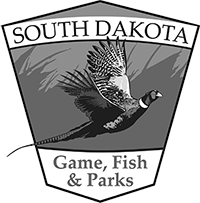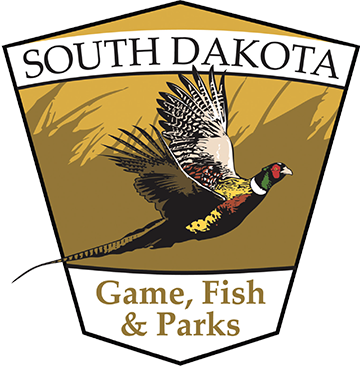Ducks
Eastern South Dakota is located within the important waterfowl breeding grounds known as the "Prairie Pothole" region. The area was scarred by glaciers at the end of the last ice age resulting in landscape dotted with lakes, wetlands and streams where ducks abound. Areas west of the Missouri River can be important waterfowl production areas as well, with vast areas of intact grassland, rivers and stock ponds.
These wetland resources are what make South Dakota a duck hunter's paradise. From small pothole hunting with a dozen decoys, layout blinds in corn fields for feeding ducks, or hunting big water on the Missouri River or glacial lakes, South Dakota provides many duck hunting opportunities.
Duck hunting seasons are set in early spring after the U.S. Fish and Wildlife Service has issued South Dakota federally mandated guidelines for the hunting seasons. Shooting hours are one-half hour before sunrise to sunset.
Each year thousands of ducks are banded across the Central Flyway as part of the operational monitoring for duck populations in North America. Band recoveries are an important tool for managers, yielding harvest rate, survival, and movement information for ducks and other migratory gamebirds. GFP has a Flyway banding goal of 2,100 ducks per year with species goals of 950 mallards, 300 northern pintail, and 800 wood ducks. As you can see below, we exceeded all banding goals in 2023.
Age ratios are an indicator of duck production, and a strong nesting season was evident this year in the Northeast portion of South Dakota with 55 percent of all ducks banded being young-of-year birds.
Good duck production starts with quality habitat. Adequate upland nesting cover (CRP and other grasslands) and diverse wetland resources on the landscape must be available to keep duck production high in South Dakota.
Our wetlands, especially in the Prairie Coteau region, are of important quality meeting molting requirements for adult male ducks, including wood ducks originating from many southern state’s populations. This is exemplified by the high proportion (79%) of total number (918) of wood ducks captured and banded this year were adult males (729). Many of these newly banded adult males will be recovered throughout the Central and Mississippi flyways. In addition, this year 10 percent of the total number (1130) of mallards banded was adult males (113).
Duck banding efforts began on August 9 and continued through September 27.
Capture methods were by rocket netting and a total of 26 rocket net shots were conducted during this year’s field season. We utilized 5 rocket net sites in Hamlin, Faulk, and Day counties.
Total of ducks banded in 2023 under the GFP banding permit was 2,366 ducks.
Species of Ducks Banded:
Mallard: 1,130
Pintail: 307
Wood Duck: 918
Green-winged Teal: 3
American wigeon: 2
Northern Shoveler: 1
Gadwall x Mallard: 1
Total: 2,366
Possession limit is three times the daily limit for each species.
Ducks:
Traditional Limit:
6 and comprised of no more than:
- 5 Mallards, which may include no more than 2 hens
- 1 Scaup
- 3 Wood Ducks
- 2 Redheads
- 3 Pintail
- 2 Canvasbacks
2 Bonus blue-winged teal (first 9 days of season only)
Coots: 15
3-Duck Option:
3 ducks of any species or sex per day (possession limit 9 ducks)
*Hunters must select a duck limit regulation option when purchasing their South Dakota Migratory Bird Certificate.
High Plains Zone
Boundary = South Dakota west of a line beginning at the North Dakota state line and extending south along US 83 to US 14; east on US 14 to the town of Blunt; south on the Blunt-Canning Road to SD 34; east and south on SD 34 to SD 50 at Lee's Corner; south on SD 50 to I-90; east on I-90 to SD 50; south on SD 50 to SD 44; west on SD 44 across the Platte-Winner Bridge to SD 47; south on SD 47 to US 18; east on US 18 to SD 47; south on SD 47 to the Nebraska state line.
Low Plains - North Zone
Boundary = South Dakota east of the boundary definition for High Plains, and north of a line beginning at the junction of US 83 and US 212; then east on US 212 to the Minnesota state line.
Low Plains - Middle Zone
Boundary = South Dakota east of the boundary definition for High Plains, and south of a line beginning at the junction of US 83 and US 212; then east on US 212 to the Minnesota state line; and north of a line beginning at the junction of SD 47 and the Nebraska state line; then north on SD 47 to SD 44; then east on SD 44 to SD 50; then south on SD 50 to CFAS 6198 (Geddes Highway) at Geddes; then east on Geddes Hwy to US 281; then south on US 281 to SD 50; then east on SD 50 to I-29; then south on I-29 to the Iowa state line.
Low Plains - South Zone
Boundary = South Dakota within a line beginning at the junction of SD 47 and the Nebraska border; then north on SD 47 to SD 44; then east on SD 44 to SD 50; then south on SD 50 to CFAS 6198 (Geddes Highway) at Geddes; then east on Geddes Hwy to US 281; then south on US 281 to SD 50; then east on SD 50 to I-29; then south on I-29 to the Iowa state line.

